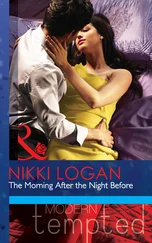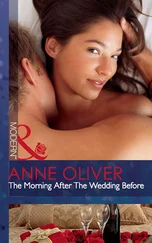The crowd there was growing, still arrayed in two lines, one facing in, the other facing out. There were National Guardsmen and local policemen, on foot and in jeeps and cars, along the sides of Sylvan Street and around its corners, at Jefferson Davis and Alabama Avenues. The marchers themselves appeared to have dressed for all kinds of weather and occasions — in denims, cassocks, tweed coats, ponchos, boots, sneakers, Shetland sweaters, silk dresses, college sweat shirts, sports shirts, khaki slacks, fur-collared coats, pea jackets, and trenchcoats. As they waited, they sang innumerable, increasingly dispirited choruses of “We Shall Overcome,” “Ain’t Gonna Let Nobody Turn Me ’Round,” and other songs of the movement. There was a moment of excitement when Dr. King and other speakers assembled on the steps, but a succession of long, rhetorical, and, to a certain extent (when press helicopters buzzed too low or when the microphone went dead), inaudible speeches put a damper on that too. An enthusiastic lady, of a sort that often afflicts banquets and church suppers, sang several hymns of many stanzas, with little melody and much vibrato. Exhaust fumes from a television truck parked to the right of the steps began to choke some of the marchers, and they walked away, coughing. Speakers praised one another extravagantly in monotonous political-convention cadences (“the man who …”). An irreverent, irritated voice with a Bronx accent shouted, “Would you mind please talking a little louder.” Several members of the crowd sat down in the street, and the march assumed the first of its many moods — that of tedium.
Then Dr. King began to speak, and suddenly, for no apparent reason, several Army jeeps drove straight through the center of the crowd. (“Didn’t realize we were interrupting,” said one of the drivers, smiling. He had a DD, for Dixie Division, emblem on his uniform.) The startled crowd, divided in half for a moment, became aware of its size. Dr. King’s speech came to an end, and there was a last, unified, and loud rendition of “We Shall Overcome.” Then the marshals quickly arranged the crowd in columns, six abreast — women and children in the middle — and the procession set out down Sylvan Street. It was about one o’clock. On Alabama Avenue, the marchers turned right, passing lines of silent white citizens on the sidewalks. On Broad Street, which is also U.S. Route 80 to Montgomery, they turned left, and as segregationist loudspeakers along the way blared “Bye, Bye, Blackbird” and the white onlookers began to jeer, the marchers approached and crossed the Edmund Pettus Bridge. And the march entered another mood — jubilation.
The day was sunny and cool. The flat road, an amalgam of asphalt and the local sand, looked pink. The people in the line linked arms, and the procession was long enough to permit the marchers to sing five different civil-rights songs simultaneously without confusion; the vanguard could not hear what the rear guard was singing. Occasionally, various leaders of the movement broke out of the line to join interviewers from the television networks, which took turns using a camera truck that preceded the line of march. For the first few miles, the highway was flanked by billboards (“Keep Selma Beautiful, Cover It with Dodge”), smaller signs (Rotary, Kiwanis, Lions, Citizens Council), diners, and gas stations. Little clusters of white onlookers appeared at various points along the road, some shouting threats and insults, others silently waving Confederate flags, and still others taking pictures of the marchers, presumably as a warning that their faces would not be forgotten when the march was over. The procession filled the two left lanes of the four-lane highway, but in the two right lanes traffic was proceeding almost normally. A black Volkswagen passed the marchers several times; on its doors and fenders were signs, lettered in whitewash: “MARTIN LUTHER KINK,” “WALK, COON,” “COONESVILLE, U.S.A.,” AND “RENT YOUR PRIEST SUIT HERE.” Several small children at the roadside waved toy rifles and popguns and chanted “Nigger lover!” “White nigger!” “Half-breed!” and other epithets. A man in front of a roadside diner thumbed his nose for the entire twenty minutes it took the procession to pass him, and a well-dressed matron briefly stopped her Chrysler, got out, stuck out her tongue, climbed in again, slammed the door, and drove off.
Several times, the march came to an abrupt halt, and in the middle ranks and the rear guard there were murmurs of alarm. Then it became clear that these were only rest stops, and the marchers relaxed and resumed their singing. Rented trucks, driven by ministers of the San Francisco Theological Seminary, carried portable toilets up and down the line. When press photographers attempted to take pictures of civil-rights leaders entering the men’s rooms, the Reverend Mr. Young shouted, “Can’t a man even go to the john in peace?” The photographers moved away. Three tired marchers rode a short distance on the water truck, and James Forman, the executive secretary of SNCC, who was being interviewed in French for Canadian television, broke off his interview to mutter as the truck passed, “Hey, man, you cats could walk.” The marchers got down from the truck at once. Forman resumed his interview. “I think he’s having trouble with his French,” said one of the marchers. “He just said that no Negro in America is allowed to vote.” “His French is all right,” said another. “But he may be less concerned with the immediate truth than with stirring up the kind of chaos that makes things change.”
By sunset of the first day, the caravan was more than seven miles from Selma, and most of the marchers returned by a special train to town, where some of them left for their home communities and others were put up for the night in the black development on Sylvan Street. Two hundred and eighty blacks, representing Alabama counties (a hundred and forty-eight from Dallas County, eighty-nine from Perry, twenty-three from Marengo, and twenty from Wilcox), and twenty whites, from all over the country, who had been chosen to make the entire journey to Montgomery (the court permitted no more than three hundred marchers on the twenty-mile stretch of Route 80 midway between Selma and Montgomery, where it is only a two-lane highway) turned off Route 80 onto a tarred road leading to the David Hall farm — their campsite for the night. Four large tents had already been pitched in a field. As the marchers lined up for supper (three tons of spaghetti), which was served to them on paper plates, from brand-new garbage pails, night fell. Groups of National Guardsmen who surrounded the farm lighted campfires. “It looks like Camelot,” said one of the younger whites.
Camelot soon became very cold and damp. By nine o’clock, most of the marchers had retired to the tents, but within an hour they had to be roused and sorted out. One tent was for men, another for women, the third for the marchers’ own night security patrol, and the fourth for the press. When everyone had been assigned to his or her proper tent, it developed that there was a shortage of blankets, winter clothes, and sleeping bags. A shivering group huddled around an incinerator, the campsite’s only source of heat. A few marchers made their way to the loft of a barn beside the Hall farmhouse, to profit from the heat given off by the animals in the stalls below. Five guinea hens perched in a tree outside the barn. The march’s security patrol wandered about with walkie-talkies; they had labelled their outposts Able, Baker, Charlie, and Dog, using the Army’s old system, to set them apart from Alpha, Bravo, Charlie, and Delta, the outposts of the National Guard along the perimeter of the field. The night grew colder, damper, and darker, and the group around the incinerator fire grew uneasy.
Читать дальше
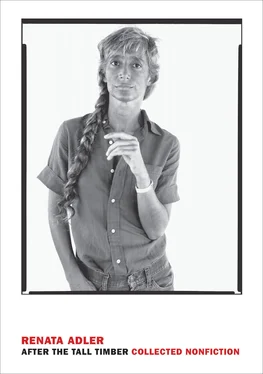
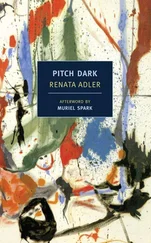


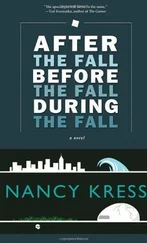
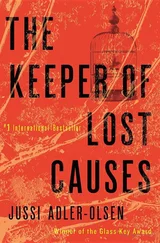
![Джеффри Арчер - The Short, the Long and the Tall [С иллюстрациями]](/books/388600/dzheffri-archer-the-short-the-long-and-the-tall-s-thumb.webp)
